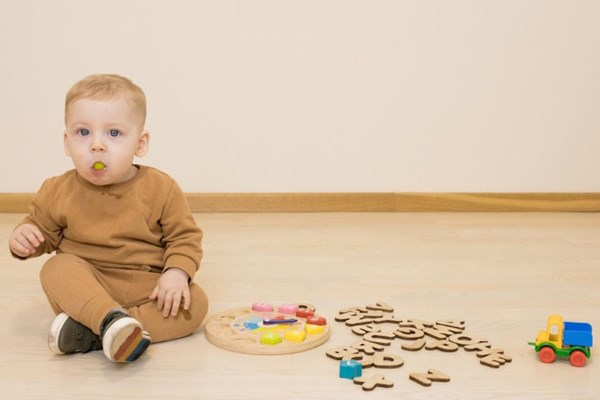Choking
Choking is a serious and life-threatening medical emergency. Obstructions to the throat or trachea (windpipe) can lead to choking as the foreign body blocks the pathway for oxygen to enter the lungs. It can happen to anyone at any age. However, young children are most at risk of choking because of their desire to examine most objects, often exploring them orally. They also may not yet have developed an understanding of risk relating to the size of foods or objects they swallow. Therefore, as the adults responsible for their welfare and safety, we must ensure the environment around children and the food we offer are as safe and suitable as possible.

In 2021, the Office of National Statistics (ONS) recorded 276 deaths due to choking (as of August 2022). This data can be split between food based choking and ‘other objects’, with the ‘other objects’ data showing a rise of almost double in the past two years compared to previous years. While we cannot speculate what has caused this rise, it is a concerning statistic.
- Choking can occur from any food object however certain foods are more hazardous to young children due to their size and/or properties. In 2021, the DfE published guidance for early years providers on food safety which identifies high-risk items and strategies to minimise the risk, found below:
remove any stones and pips from fruit before serving, - cut small round foods, like grapes, strawberries and cherry tomatoes, lengthways and into quarters,
- cut large fruits like melon, and hard fruit or vegetables like raw apple and carrot into slices instead of small chunks,
- do not offer raisins as a snack to children under 12 months – although these can be chopped up as part of a meal,
- soften hard fruit and vegetables (such as carrot and apple) and remove the skins when first given to babies from around 6 months,
- sausages should be avoided due to their high salt content, but if offered to children these should be cut into thin strips rather than chunks and remove the skins,
- remove bones from meat or fish,
- do not give whole nuts to children under five years old,
- do not give whole seeds to children under five years old,
- cut cheese into strips rather than chunks,
- do not give popcorn as a snack,
- do not give children marshmallows or jelly cubes from a packet either to eat or as part of messy play activities as they can get stuck in the throat,
- do not give children hard sweets.
In addition to the above, the Food Standards Agency have created some helpful posters which go into further detail around choking hazards in food items, downloadable from the Foundation Years website: https://foundationyears.org.uk/2021/09/food-safety-advice-on-choking-hazards-in-settings/
Non-food based items, such as marbles, small balls, dice, coins, small parts or broken toys, are also a choking risk. When caring for very young children, using a choke tester may be one way to further risk assess the suitability of resources available to children. These tubes are designed to be about the same diameter as a young child's windpipe. If an object fits inside the tube, then it's too small for a young child.
Battery-operated toys should have battery cases that secure with screws so that children cannot pry them open. Batteries and battery fluid pose serious risks, including choking, internal bleeding, and chemical burns. Button batteries are often located inside musical birthday cards and badges therefore children should not have unsupervised access to these items at any point.

Types of choking
Choking can be classed as either mild or severe. If the airway is only partly blocked this would be counted as mild choking. This is identified by the person usually being able to speak, cry, cough or breathe. They'll usually be able to clear the blockage themselves by coughing. Treatment involves:
- encouraging them to keep coughing to try to clear the blockage,
- asking them to try to spit out the object if it's in their mouth,
- ensuring you don't put your fingers in their mouth as they may bite you accidentally,
- commencing back blows if coughing does not dislodge the object.
Severe choking requires immediate action. Someone who is choking severely will not be able to talk, cough, cry or breathe. They will usually show signs of distress, be grasping at their airways and potentially show a change in skin tone around their face and lips. The action taken to treat the patient will depend on the age of the patient.
Children under 1 year:
Back blows
- Sit down and lay the infant face down along your thigh or forearm, supporting their torso and head with your hand,
- Give up to 5 sharp back blows with the heel of 1 hand in the middle of the back between the shoulder blades.
If 5 back blows do not dislodge the object, start chest thrusts:
- Lay the infant face up along the length of your thighs,
- Find the breastbone and place 2 fingers in the middle,
- Give 5 sharp chest thrusts (pushes), compressing the chest by about a third.
Children over 1 year:
Back blows
- For younger children, lay them face down on your lap as you would an infant,
- For older children, support the child in a forward-leaning position,
- Give up to 5 sharp back blows with the heel of 1 hand in the middle of the back between the shoulder blades.
If 5 back blows do not dislodge the object and the patient is still conscious, start abdominal thrusts:
- Stand or kneel behind the child. Place your arms under the child's arms and around their upper abdomen,
- Clench your fist and place it between the navel and ribs,
- Grasp this hand with your other hand and pull sharply inwards and upwards,
- Repeat up to 5 times.
In all ages, after the above has taken place:
For all treatments, stop the moment the object is dislodged. Even if the object has come out, get medical help. Part of the object might have been left behind or the patient might have been hurt by the procedure.
If the cycle of 5 back blows and 5 chest or abdominal thrusts do not dislodge the object, call 999 (ideally on speakerphone) and start the treatment cycle again.
Be prepared for the infant or child to fall unconscious if the object does not dislodge. If this occurs, begin CPR starting with 5 rescue breaths as normal. Continue until the patient becomes responsive again or further help arrives and instructs you to stop.
Be prepared that the patient may have a seizure during their immediate recovery. This is due to the brain being starved of oxygen while their airway was obstructed. Ensure you time the length of the seizure, move any objects away from the patient which could injure them and cushion their head.
Sources and additional information:
- https://help-for-early-years-providers.education.gov.uk/safeguarding-and-welfare/food-safety
- https://www.ons.gov.uk/aboutus/transparencyandgovernance/freedomofinformationfoi/ukchokingrelateddeaths2020and2021includingage
- https://www.nhs.uk/conditions/baby/first-aid-and-safety/first-aid/how-to-stop-a-child-from-choking/
- https://www.nhs.uk/common-health-questions/accidents-first-aid-and-treatments/what-should-i-do-if-someone-is-choking/
- https://www.familycorner.co.uk/preventing-children-choking-hazards-watch-out
- https://www.nsc.org/community-safety/safety-topics/choking
- https://www.betterliveshealthyfuturesbw.nhs.uk/learning_resource/safety-preventing-choking/